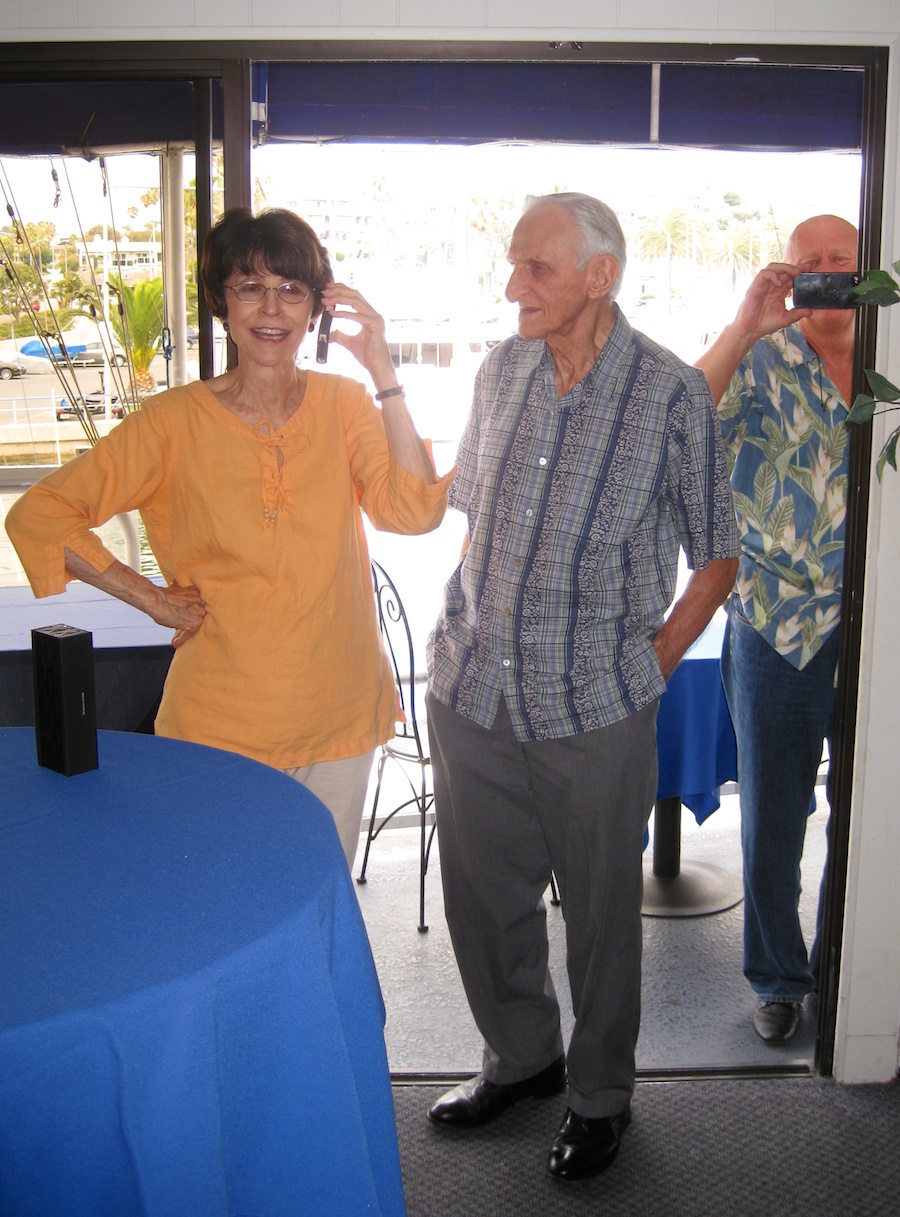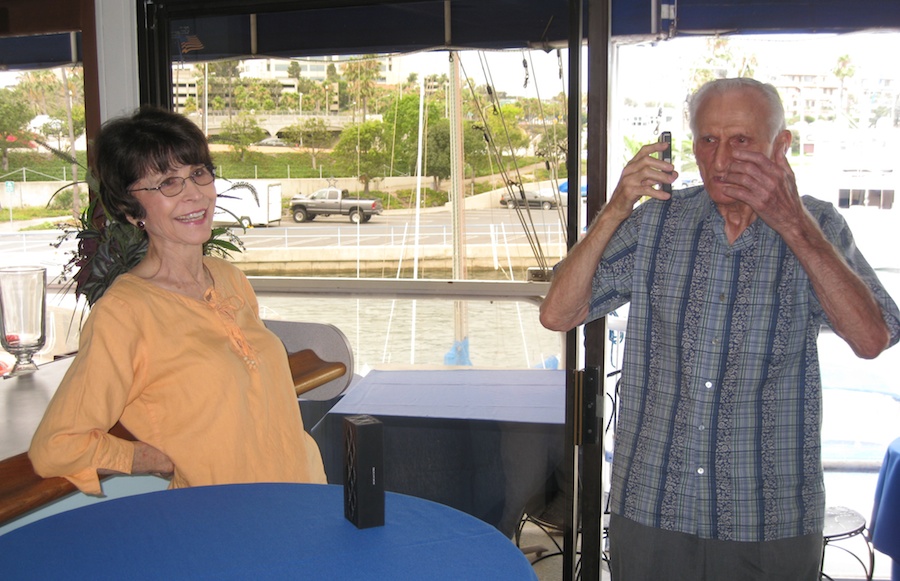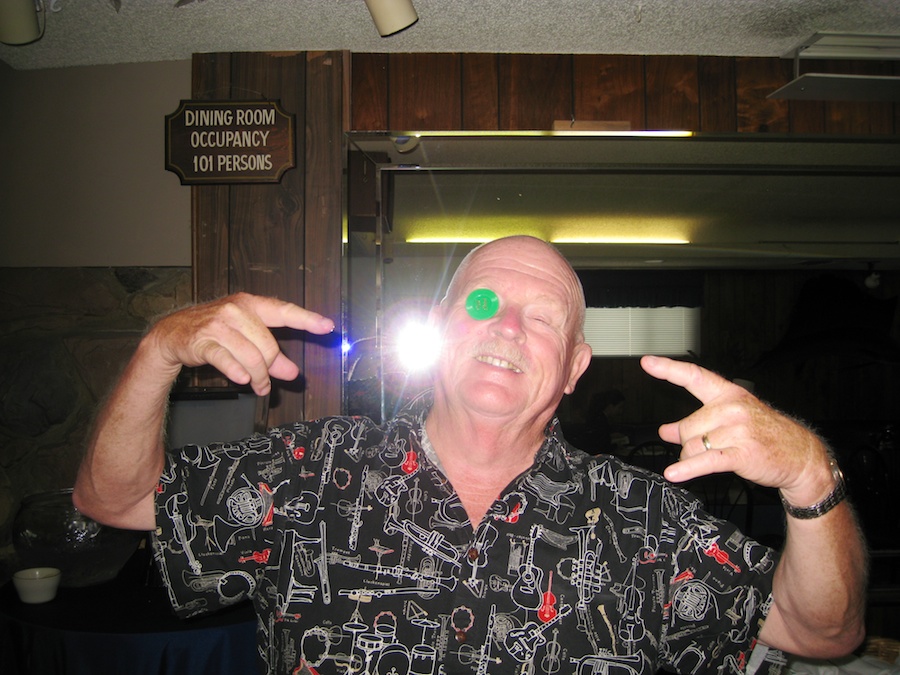Off To The Newport Harbor Elks To Await "The Phone Call" On 7/28/2013
Brian and Jan have been in the UK for a while and we asked them to call on Sundays to everyone could say howdy. They did... We did! But first... Visiting and dancing!

We are getting to know a load of folks at Newport Harbor
The Phone Rang.... Who Was It! We Ran Upstairs!

"Pip Pip and Tally-Ho"


London Calling.....

"Hey... You sound pretty good for being 5000 miles away!
| London, UK | -0.1167 51.5000 |
| Los Angeles, US | -118.2430 34.0522 |
| Miles: | 5437.37 |
| Kilometers: | 8750.35 |
| Bearing: | SW |
Did You Know? - One hundred and thirty years ago....
July 1874: Alexander Graham Bell first conceives the theoretical concept for the telephone while vacationing at his parents' farm near Brantford, Canada. Alexander Melville Bell records notes of his son's conversation in his personal journal.
7 March 1876: Bell's U.S. Patent, No. 174,465 for the telephone is granted.
10 March 1876: Bell first successfully transmits speech, saying "Mr. Watson, come here! I want to see you!"

"Hello hello... Are you there Brian???"

Transatlantic cable map circa 2010
Did You Know? - TAT-1 (Transatlantic No. 1) was the first transatlantic telephone cable system. It was laid between Gallanach Bay, near Oban, Scotland and Clarenville, Newfoundland between 1955 and 1956 by the cable ship Monarch.
It was inaugurated on September 25, 1956, initially carrying 36 telephone channels. In the first 24 hours of public service there were 588 London–U.S. calls and 119 from London to Canada. The capacity of the cable was soon increased to 48 channels. TAT-1 was finally retired in 1978.
TAT-14 was installed in the year 2000 and carries 3.2 Terrabytes of data. Almost unlimited!

Bob gets the weather report directly from London!
Did You Know? - When the first transatlantic telegraph cable was laid in 1858 by businessman Cyrus West Field, it operated for only a month; subsequent attempts in 1865 and 1866 were more successful. Although a telephone cable was discussed starting in the 1920s, to be practical it needed a number of technological advances which did not arrive until the 1940s.
Starting in 1927, transatlantic telephone service was radio-based.

"Sandy Sandy... Brian's voice is coming out of this little box.... It's magic!"

"I am so glad they called!!"
Did You Know? - A transatlantic telecommunications cable is a submarine communications cable running under the Atlantic Ocean. All modern cables use fiber optic technology.
Most such cables follow the great circle route from London, England to New York City, USA because of the high-speed requirements of international financial transactions. Financial trading firms spend billions of dollars annually to get an edge on trading.
This route provides convenient well-supported landings in Canada near Halifax (Nova Scotia), Moncton (New Brunswick), or St. John's (Newfoundland and Labrador), and in Iceland, Belfast (Northern Ireland) or Dublin (Ireland).

It was hot and muggy in London.... Not like good old California

"How is everything???"

"OK, we are about to Ring Off so Cherrio
Did You Know? - The first transatlantic telegraph cable was laid by cable layers from 1857–58. It briefly enabled telecommunication between Europe and North America before misuse resulted in failure of the line. In 1866 the SS Great Eastern successfully laid two transatlantic cables, securing future communication between the continents.

Bye for now... Talk to you next week!

Did You Know? - Modern cables are typically 69 millimetres (2.7 in) in diameter and weigh around 10 kilograms per metre (7 lb/ft), although thinner and lighter cables are used for deep-water sections. As of 2010, submarine cables link all the world's continents except Antarctica.
Dance And Visiting Time

Gene is ready to go with his new chapeaux

The Elks like to dance....

Guitar anyone???

Gene's four piece group is fantastic....

Hans and Kerstin talk to the floor.... Notice Kerstin is VERY BRAVE! Sandals???

We danced all afternoon

Paul won a free drink! What should one do with a poker chip??


Paul has a monocle
Did You Know? - A monocle is a type of corrective lens used to correct or enhance the vision in only one eye. It consists of a circular lens, generally with a wire ring around the circumference that can be attached to a string or wire.
The other end of the string is then connected to the wearer's clothing to avoid losing the monocle. The antiquarian Philipp von Stosch wore a monocle in Rome in the 1720s, in order to closely examine engravings and antique engraved gems, but the monocle did not become an article of gentlemen's apparel until the nineteenth century.
It was introduced by the dandy's quizzing glass of the 1790s, as a sense of high fashion.

Checking the facts... Only the facts!


